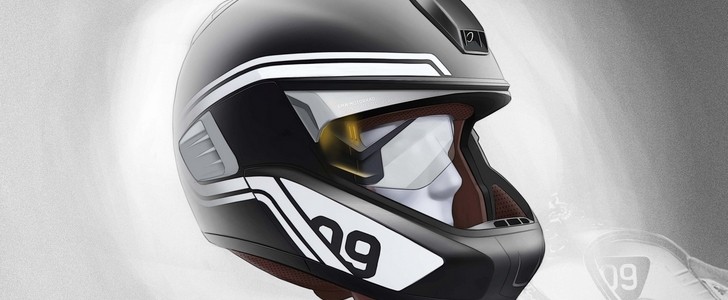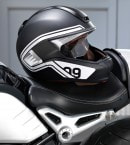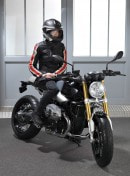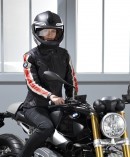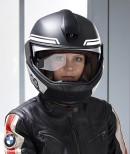BMW Motorrad is taking their motorcycle helmets to the next level with the all-new HUD project they are presenting at CES this year. It looks like the future will integrate both V2V (vehicle to vehicle) and HUD (head-up display) technology, adding a new dimension to the riding experience.
Back in 2003, BMW was the first manufacturer to add HUD as optional technology for their cars, and now this feature is extending to the motorcycle segment as well. The current prototype helmet was fitted with a transparent screen that displays critical information in the rider's field of view.
The information is presented in a non-distracting way so the riders no longer have to glance at the instruments and neither do they have to change focus to access it. The technology is very similar to that used in the jet fighter helmets, which allow pilots to visualize important info while they are also scouting the area surrounding them.
"Technical status of the motorcycle, such as tyre pressure, oil level and fuel level, travel speed and selected gear, speed limit and road sign recognition, plus warnings of impending dangers," are only a few of the things that can be shown on the display.
Thanks to the expanding V2V inter-vehicle communication technology, info on potential road hazards can also be relayed to the rider and displayed on the HUD. Alternate route planning and other navigation-related data are part of the HUD game as well.
Even more, the BMW HUD helmet comes with two cameras, with the front one usable for taking pictures or shooting videos on the road, and the rear one acting as a rearview mirror or allowing the rider to monitor the bikes behind.
The helmet is equipped with a mini-computer and speakers, replaceable/rechargeable batteries that are expected to last up to five hours, and can be controlled via the BMW multicontroller handlebar buttons. Riders will be able to integrate the entire system with existing helmets.
BMW Motorrad expects to see the HUD helmet reaching series-production level within several years.
The information is presented in a non-distracting way so the riders no longer have to glance at the instruments and neither do they have to change focus to access it. The technology is very similar to that used in the jet fighter helmets, which allow pilots to visualize important info while they are also scouting the area surrounding them.
Programmable displays allow riders to choose what type of data the HUD offers
The new BMW HUD helmets will be user-customizable in terms of what data is displayed, so riders will not have to sort out through info they don't actually need to see. BMW intends to integrate complex flows of data in the HUD helmet, offering riders the possibility to access a wide variety of information regarding their vehicle, navigation, safety and so on."Technical status of the motorcycle, such as tyre pressure, oil level and fuel level, travel speed and selected gear, speed limit and road sign recognition, plus warnings of impending dangers," are only a few of the things that can be shown on the display.
Thanks to the expanding V2V inter-vehicle communication technology, info on potential road hazards can also be relayed to the rider and displayed on the HUD. Alternate route planning and other navigation-related data are part of the HUD game as well.
Even more, the BMW HUD helmet comes with two cameras, with the front one usable for taking pictures or shooting videos on the road, and the rear one acting as a rearview mirror or allowing the rider to monitor the bikes behind.
The helmet is equipped with a mini-computer and speakers, replaceable/rechargeable batteries that are expected to last up to five hours, and can be controlled via the BMW multicontroller handlebar buttons. Riders will be able to integrate the entire system with existing helmets.
BMW Motorrad expects to see the HUD helmet reaching series-production level within several years.
